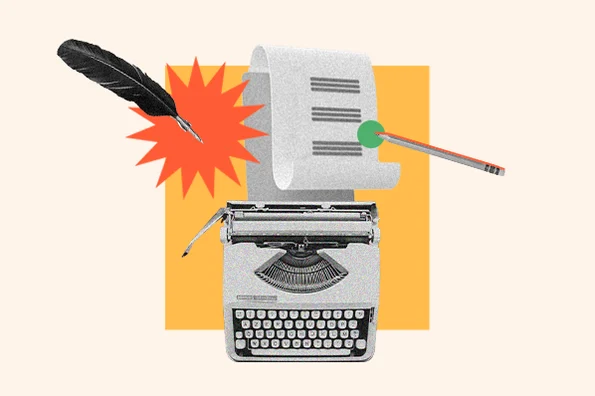Months after Beau is born:
He’s still very small. I’m on the couch, horizontal, lying on my back, holding him above my head. My elbows are bending. I’m moving him up and down. We’re playing, laughing. My mouth is open.
Beau spits up.
My mouth is suddenly full. It’s breast milk — recently consumed and now regurgitated — but I’m not fazed, believe it or not. My son is three months old, after all. Strange things happen. I look at my wife. She’s cackling at my misfortune. I get up and pass her the boy and go to the sink and spit.
“Kels—” I call out.
“Yeah?”
“Have you seen the nose thing?” I said. “He’s stuffy.”
The day Beau was born:
Kelsey woke me up early. It was still dark outside. Light from the bathroom poured into the bedroom. “My water broke,” she said.
We drove to the hospital. We went through triage. We met the nurse and the doctor and settled into the delivery room. “This is a process,” said the nurse. “Try to get comfortable.”
We tried. I closed the blinds and dimmed the lights and adjusted my wife’s hospital bed until she said, “That feels good.” The room was dark and quiet, calm. Kels fell asleep. Her back was to me. I was sitting in a recliner, reading something, listening to my son’s heartbeat come through the fetal monitor.
I closed my eyes. The door opened. My eyes opened. “Okay—” said the nurse, “we have a grumpy baby in there—” Kels sat up. I stood up. “I’m gonna have you roll over—” the nurse told my wife.
Then, suddenly, another nurse walked in. And another. And another. Then the obstetrician walked in. Then the anesthesiologist. Suddenly, a dozen people surrounded my wife, shifting her this way and that way, propping her up. “It’s gonna be fine, dear—” said the nurse, “just breathe, dear, breathe—”
I backed up until my heel hit the wall. I was in the corner now. My wife was on her knees and elbows now. I couldn’t see her face anymore. A doctor approached me. “Dad?” I looked at her. “The boy’s heart rate just dropped.”
“Dropped?”
“Yes,” she said. “One-ten to one-sixty is normal in utero—” I looked at the monitor. It was beeping and bouncing: fifty-four, fifty-seven, fifty-two. “It's in the fifties now,” she said.
“Why?” I said. My palms were wet.
“Probably the umbilical cord—” the doctor kept talking, elaborating, but I could only see my wife and hear the monitor and feel my throat tightening.
Then, suddenly, the beeping stopped. “Heart rate stabilized,” someone said, and the room cleared out as quickly as it had filled up.
Then, suddenly, it was just me and my wife and the doctor, who said, “This can’t keep happening.”
“But what actually happened?” my wife asked.
The doctor repeated herself. “The umbilical cord,” she said, “it’s compromised.” Then she told us if the heart rate deceleration kept happening, an emergency cesarean would be necessary. Kelsey squeezed my hand. I squeezed back. An hour later, it happened again. And again after that.
“Okay,” said my wife, and signed the liability form.
“Okay,” said the doctor, and the nurses began rolling Kelsey’s bed toward the operating room. Before she turned the corner, we signed I Love You to each other.
Three fingers. Then, suddenly, it was just me. I was alone, sitting there, picking the skin off my thumb and tapping my foot. I looked down. My thumb was bleeding. I stopped picking and put it in my mouth.
I’m a secular person, but in that moment, I began to pray. “God—” I looked down. The blood was pooling in my cuticle. I let it go. “Please—” I didn’t know what I was doing. “Please—” I didn’t know how to talk to God. “Please, Lord—” I began bartering with Him. “I swear to you,” I said, “I’ll be the best dad.”
The moment Beau is born:
In the operating room, when the surgeon lifts him up over the blue curtain and I see him for the first time, I recognize him. So much so, in fact, it takes my breath away. I gasp. I know this person. I know his face.
It feels like when you run into an old friend, someone you left behind, and they’ve changed, of course — time has changed them — but you still see them as you once knew them. This is what it feels like the moment Beau is born. It feels like I already know him.
The surgeon passes the boy to a nurse. “Apgar at one and five—” he says.
“Yes, Doctor,” says the nurse.
“And I need suction on the left—” he says in the same breath.
“Yes, Doctor,” says another nurse.
“More—”
“Yes, Doctor.”
Beau is in a small room now, adjacent to the OR. He needs to be cleaned and measured and weighed. I look at Kelsey. “Go meet him,” she says.
A year after Beau was born, I did a writing experiment.
I asked one of the big AI engines a question:
“Can you describe meeting your firstborn child?”
The computer thought for a moment, then produced 88 words:

I read it, then wrote my own version, except I limited myself to exactly as many words as the AI’s passage. I often practice writing this way. Efficiency, after all, is my bread and butter as a copywriter. Word economy is baked into the discipline. Saying more in fewer words is never a bad thing:

When I shared it in my newsletter and on LinkedIn, the response was remarkable. The concept, clearly, struck a nerve. Hundreds of thousands of people saw the experiment, prompting over a thousand comments, DMs, and emails. All that feedback culminated in a consensus: my version is better.
Readers said that despite using only as many words as the AI, my passage created much richer, more vivid imagery: “I could actually see your version,” someone commented. “It felt like a movie was playing in my head.”
“Mind Movies” are a real phenomenon.
Harvard psychologist Stephen Kosslyn calls it “Mental Imagery,” or the “reproduction of visual images in the absence of the stimuli themselves.”
Mind Movies can be self-inflicted — an athlete, for example, might imagine herself making the game-winning shot — or, they can be done to us, prompted by writing.
But how? I’ll tell you exactly:
You can put “holes” in your writing.
In other words, leave things out — details, context — and this will give The Reader a chance to “fill in” that space, to use her imagination, to access her own experiences, or memories, good or bad, painful or pleasant.
Holes invite The Reader to participate in the narrative.
But how do you create holes? I’ll tell you exactly:
1. Anti-description
For example, I don’t need to tell you I’m in a hospital:

You fill in this hole for yourself because I mention “the nurse,” and “masks” and “gowns” and “gloves” and “hairnets.” These context clues are enough to conjure the colors, smells, and sterility of a hospital.
I’m not giving you a description as much as an anti-description — small details that force you to color in the story based on your own experiences in a hospital, creating an image that is invariably more real and believable.
This process of filling in the details for yourself — even if they’re not perfectly accurate — is not only engaging, but can also conjure profoundly vivid imagery, the fodder of a “Mind Movie.”
Another way this phenomenon expresses itself is via The Kuleshov Effect, discovered by film researcher Lev Kuleshov, who did an experiment. He put an actor in front of a camera and asked him to deliver an expressionless look. The actor, someone named Ivan Mosjoukine, did this:

Then, Kuleshov showed audiences a series of shots, followed by Mosjoukine’s expressionless face.
He showed them a bowl of soup:

He showed them a small girl in a coffin:

He showed them a woman on a fainting couch:

In his book, The Power of Film, film professor Howard Suber explains the significance of this experiment.
“Audiences raved at the range of this great actor,” says Suber, “How he expressed how famished he was in front of that bowl of soup. And how heartbroken he was at his child — nothing had identified any relationship between the child and the actor; the audience read that story into it,” says Suber. “And the woman on the couch … desire.”

“What Kuleshov proved is you don’t want theatrical acting in which the actor projects to the back of the house,” explains Suber. “The actor does not need to project. The audience is projecting onto the actor the emotions they think the actor is feeling, even though the actor isn’t expressing any emotion.”
Mosjoukine’s “expressionless look” in film is like “anti-description” in writing: by giving The Reader less, you’re actually giving them more to imagine, visualize, and experience.
2. Dialogue
For example, I don’t need to tell you I’m anxious in this scene:

You fill in this hole for yourself, based on what I’m saying, the observations I’m stating, and the questions I’m asking. This is also known as subtext. It’s the true meaning behind what characters say — and it’s one of our salient advantages as human writers.
For example, I’m not simply saying “Hello” to my son:

Ostensibly it’s a greeting, but it’s actually me becoming a new person. In this moment, the old person, the childless person — the one that wouldn’t even consider using a NoseFrida — is gone. In this moment, my priorities and worldview have changed, irreversibly so. I’ve transformed.
You fill in this hole for yourself by letting the context — the circumstance, the setting — dictate the meaning.
This is in stark contrast to the AI’s approach.
The computer lacks consciousness. It’s not aware of itself, much less the human condition. It can’t comprehend the essence of a person, or the significance of a moment, much less this moment, the gravity and complexity of meeting your firstborn child.
So, instead, the AI spoon-feeds us a series of platitudes and cliches, an amalgamation of some ideal scenario, some version of perfection:

It falls flat, of course, because it’s just not that simple.
“The AI’s version may well be accurate (for some at least), but it lacks the warmth and reality of holding your child for the first time,” explains fellow writer and parent, Katie Murray, in a comment on my post.
“As a first-time parent, I was ecstatic and anxious in equal measure as I held my beautiful baby for the first time. You recognize the thrill and the responsibility of being a parent simultaneously, and nothing quite prepares you for either.”
The AI can’t understand this duality because it’s not alive. It didn’t live this moment, so it can’t relate.
It didn’t just watch the most important person in its life go through 36 hours of hard, complicated labor. It didn’t witness its unborn child struggling to breathe inside the womb of this person.
It wasn’t there during emergency surgery at 4 o’clock in the morning, sitting by its wife, holding her head, telling her everything is going to be okay when there was a very real possibility that it wouldn’t be … that something horrible and unthinkable might happen to its family, to their future together, to their love.
People are the most incredible animals because, every day, we go through life with the knowledge that everything we care about, everything we love, could be taken from us. And yet, we go on anyway. Every day, we persist.
And sometimes, we’re reminded of this reality, and it does something to us, and that’s why I wrote what I wrote. I wrote my truth. And because we all share the human experience, so many people understood that truth.
They related to my version, my experience — and they were equally underwhelmed by the version put forth by the AI.
This is why copywriting will always be a human profession.
Because writing is actually not our work.
“[Writing] a great ad,” said creative director Jeff Goodby,” is [putting] a mirror in front of your audience.”
Writing is important, of course, and hopefully, the dialogue, anti-description, and subtext I created illustrates the enormous chasm between a human’s turn of phrase and that of a machine. But even so, if that chasm were to close — years or decades into the future, if ever — I hope every copywriter reading this finds solace in the fact that writing is just our medium, the vessel through which we put a mirror in front of our audience, and reflect something patently human and imperfect and true.
Copywriting













